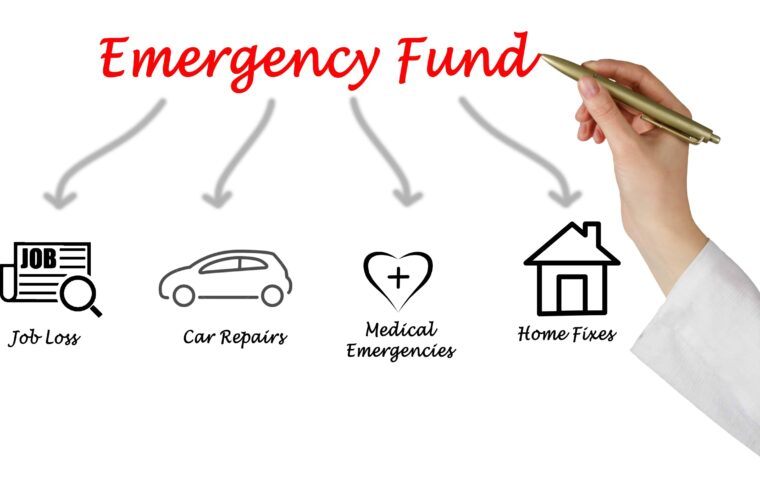The Financial Safety Net You Can’t Afford to Ignore: Building Your Emergency Fund
In an unpredictable world, financial stability can feel like a distant dream. But what if there was a way to cushion yourself against life’s unexpected blows? Enter the emergency fund – your personal financial airbag that can mean the difference between weathering a storm and drowning in debt. Let’s dive into why emergency funds are crucial and how you can build one, even if you think you can’t afford to save.
Why You Need an Emergency Fund
Imagine waking up to find your car won’t start, or receiving an unexpected medical bill, or worse, losing your job. Without an emergency fund, these situations can quickly spiral into financial disasters. Here’s why having this financial buffer is non-negotiable:
1. Peace of Mind: Knowing you have a safety net reduces stress and anxiety about potential financial setbacks.
2. Avoiding Debt: An emergency fund prevents you from relying on high-interest credit cards or loans when unexpected expenses arise.
3. Financial Freedom: With a cushion, you’re more likely to take calculated risks, like changing careers or starting a business.
4. Relationship Saver: Money problems are a leading cause of relationship stress. An emergency fund can help prevent financial strain from damaging your personal relationships.
5. Opportunity Creator: Sometimes, opportunities come with upfront costs. An emergency fund can help you seize these moments without hesitation.
The Real Cost of Not Having an Emergency Fund
Let’s consider a scenario: Your car breaks down, requiring $1,000 in repairs. Without an emergency fund, you might turn to a credit card with 20% APR. If you can only afford minimum payments, it could take years to pay off, potentially costing you hundreds in interest. Now imagine if multiple emergencies stack up – the financial impact could be devastating.
How Much Should You Save?
Financial experts typically recommend saving 3-6 months of living expenses. However, this can seem daunting, especially if you’re living paycheck to paycheck. Remember, any amount saved is better than none. Start with a goal of $1,000 and build from there.
Building Your Emergency Fund: A Step-by-Step Guide
1. Assess Your Current Situation
Start by tracking your income and expenses for a month. This will give you a clear picture of where your money is going and where you might be able to cut back.
2. Set a Realistic Goal
Based on your financial situation, set an initial goal. It could be $500, $1,000, or one month’s expenses. Make it challenging but achievable.
3. Open a Separate Savings Account
Keep your emergency fund separate from your regular checking account to reduce the temptation to dip into it for non-emergencies. Check out this online high yield interest savings account from Sofi. Its a great tool, to help your money make you money.
4. Automate Your Savings
Set up automatic transfers from your checking to your emergency fund savings account. Even small amounts add up over time.
5. Find Extra Money to Save
Look for ways to increase your savings:
– Cut unnecessary expenses (e.g., subscriptions you don’t use)
– Sell items you no longer need
– Take on a side hustle or overtime hours
– Save windfalls like tax refunds or bonuses
6. Make Saving a Game
Challenge yourself to no-spend days or weeks. Put the money you would have spent into your emergency fund.
7. Regularly Review and Adjust
As your income or expenses change, adjust your savings plan accordingly.
Creative Ways to Boost Your Emergency Fund
1. The 52-Week Money Challenge: Save $1 the first week, $2 the second week, and so on. By the end of the year, you’ll have saved $1,378.
2. The Spare Change Strategy: Round up every purchase to the nearest dollar and save the difference. Many banks offer this feature automatically.
3. The “Save Your Raises” Approach: When you get a raise, continue living on your old salary and save the difference.
4. The Pantry Challenge: For one week each month, eat only what’s in your pantry and freezer. Put the money you would have spent on groceries into your emergency fund.
5. The $5 Bill Method: Every time you receive a $5 bill as change, put it directly into your emergency fund.
Overcoming Savings Obstacles
“I don’t make enough to save.”
Even saving $5 a week adds up to $260 a year. Start small and increase as you can.
“I have too much debt to save.”
While paying off high-interest debt should be a priority, building even a small emergency fund can prevent you from accumulating more debt when unexpected expenses arise.
“I’ll start saving later when I make more money.”
The best time to start is now. Waiting only puts you at risk of financial emergencies you can’t handle.
When to Use Your Emergency Fund (And When Not To)
Your emergency fund is for true financial emergencies:
– Job loss
– Medical emergencies- (Some medical providers will give a discount if you contact them and ask for it, if you pay your bill all at once, if you can.) Likewise- you can also request a payment plan with the provider.
– Essential home or car repairs
– Unexpected travel for family emergencies
It’s not for:
– Planned expenses (e.g., annual insurance premiums)
– Non-essential purchases
– Regular bills you should be budgeting for
Replenishing Your Emergency Fund
If you do need to use your emergency fund, make replenishing it a top priority. Adjust your budget temporarily to redirect more money towards rebuilding your safety net.
The Psychological Benefits of an Emergency Fund
Beyond the financial security, an emergency fund provides significant psychological benefits:
– Reduced financial stress and anxiety
– Increased sense of control over your life
– Greater confidence in making financial decisions
– Improved overall well-being and life satisfaction
Remember, building an emergency fund is a journey, not a destination. It’s about progress, not perfection. Every dollar saved is a step towards greater financial security and peace of mind.
Start Today, Secure Your Tomorrow
In a world where financial uncertainties lurk around every corner, an emergency fund is your personal shield against life’s unexpected challenges. It’s not just about money; it’s about empowering yourself to face the future with confidence. Its so easy to start today, take 1 thing in your daily routine that you may spend frivolously on, let’s say that gourmet cup of coffee from Starbies. Learn to make your coffee to your liking at home, and save those dollars you’d normally spend to begin your emergency fund. Here is one Mocha copycat recipe, as an example.
Begin today, no matter how small. Set a goal, make a plan, and take that first step towards building your financial safety net. Your future self will thank you for the peace of mind and financial freedom that comes with knowing you’re prepared for whatever life throws your way.
Remember, financial security isn’t just for the wealthy – it’s for anyone willing to take small, consistent steps towards a more stable future. Your emergency fund is waiting to be built. Are you ready to start?




